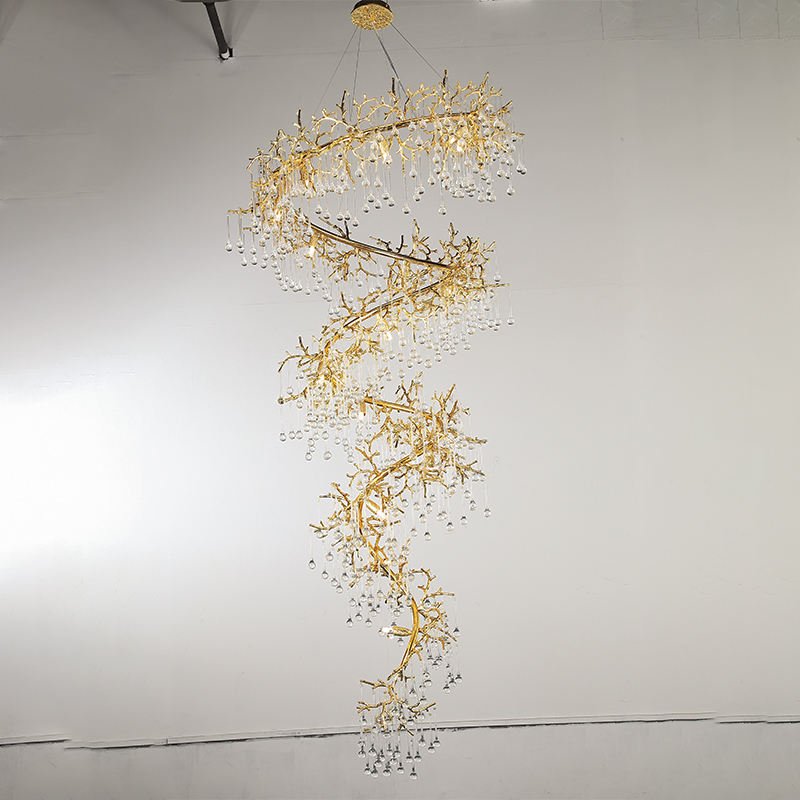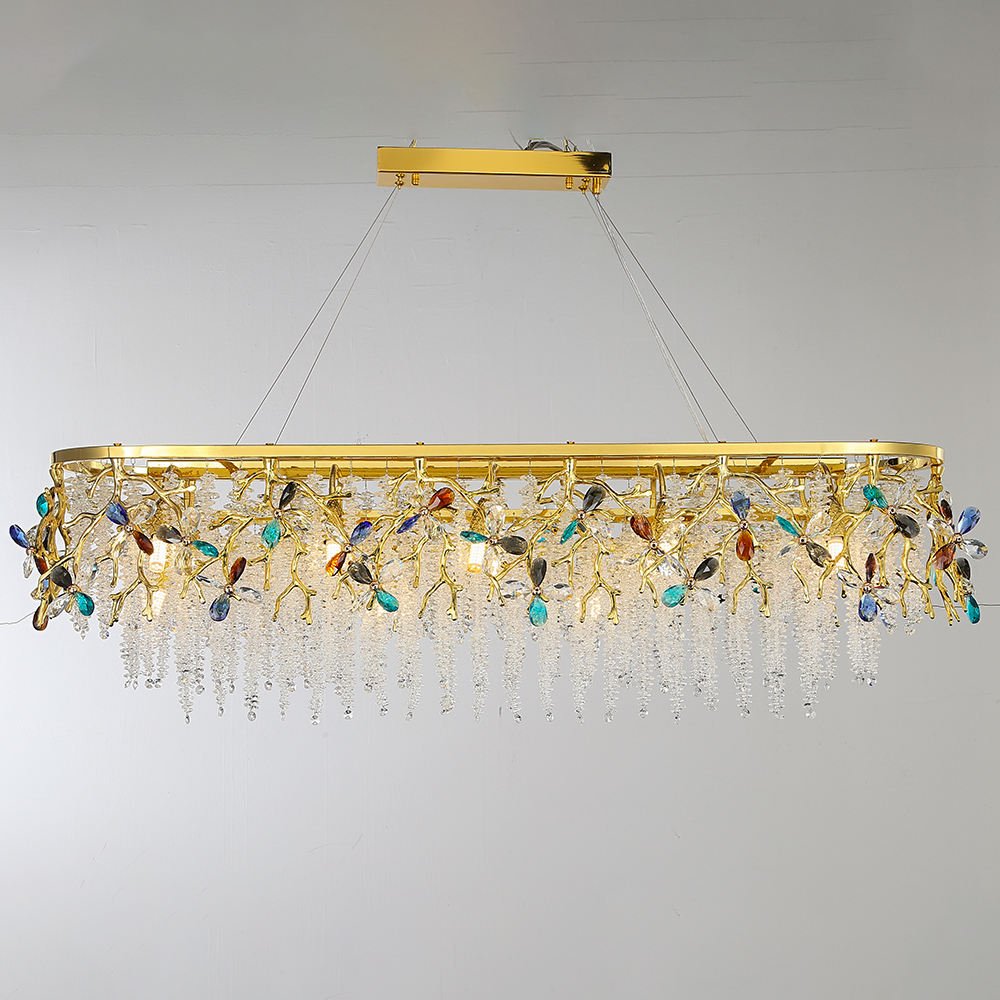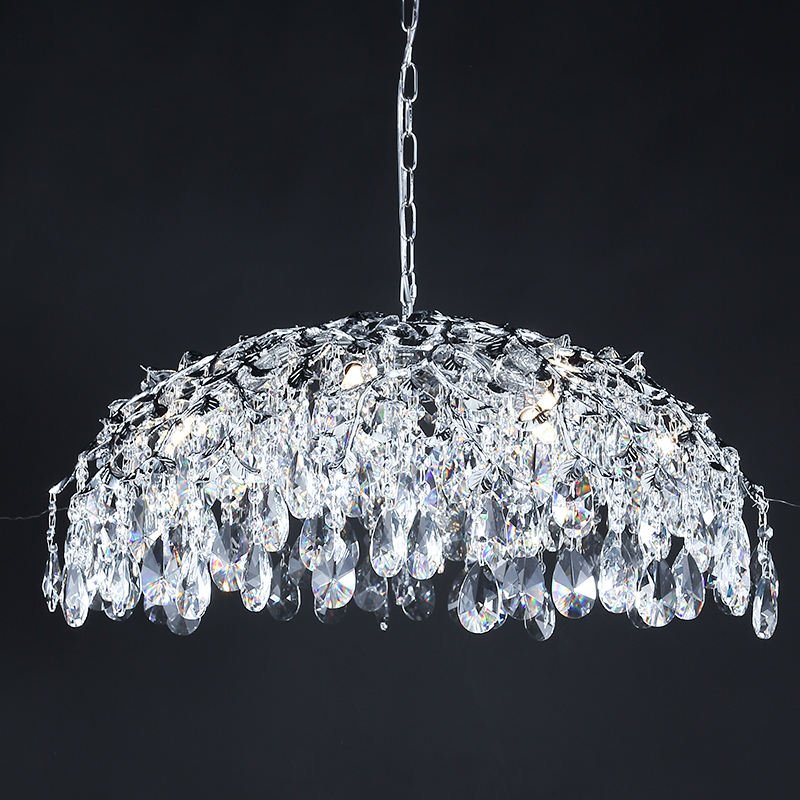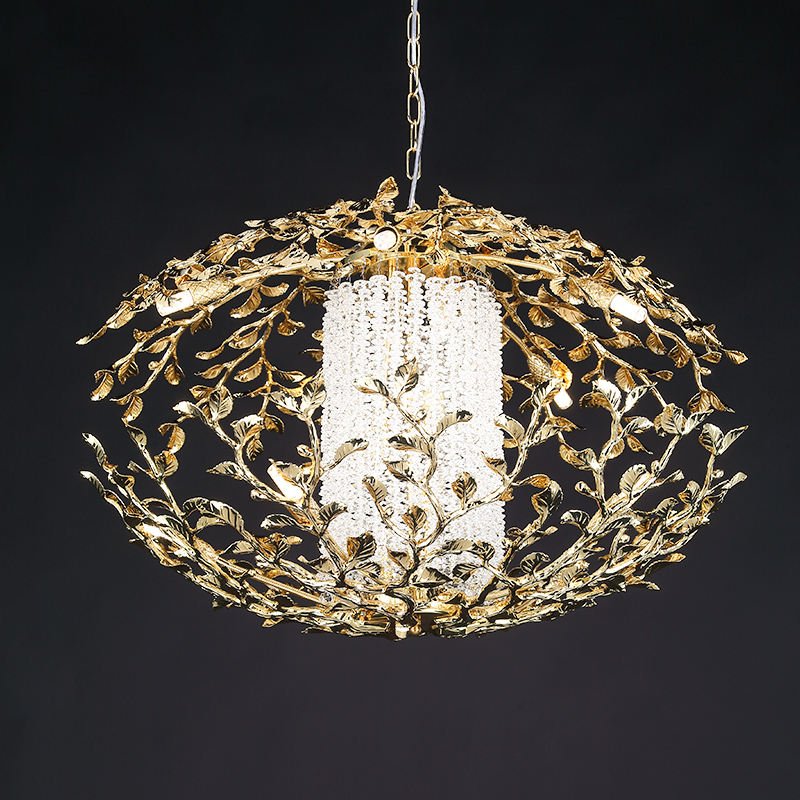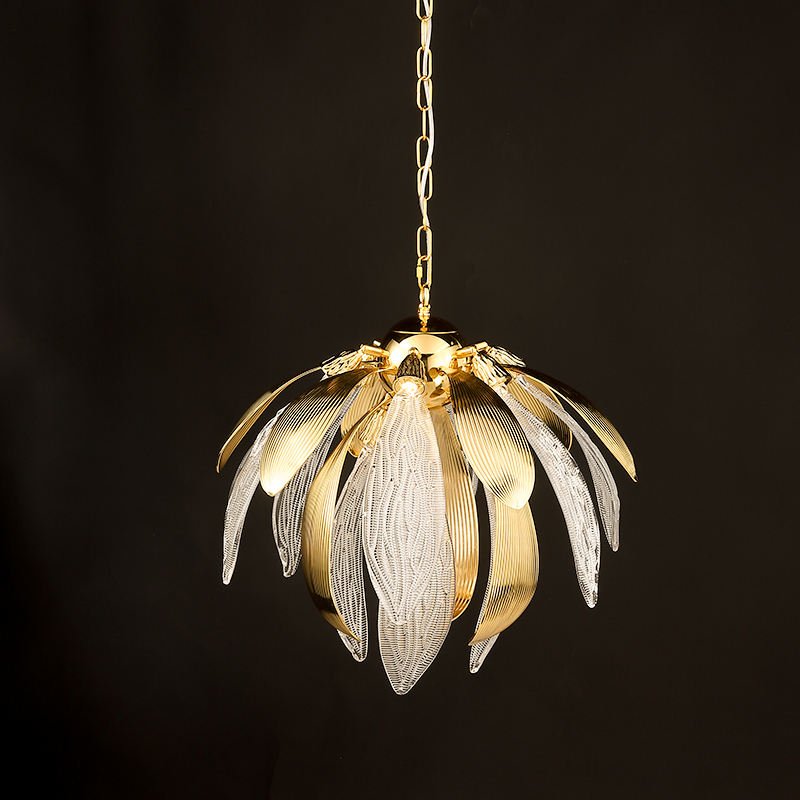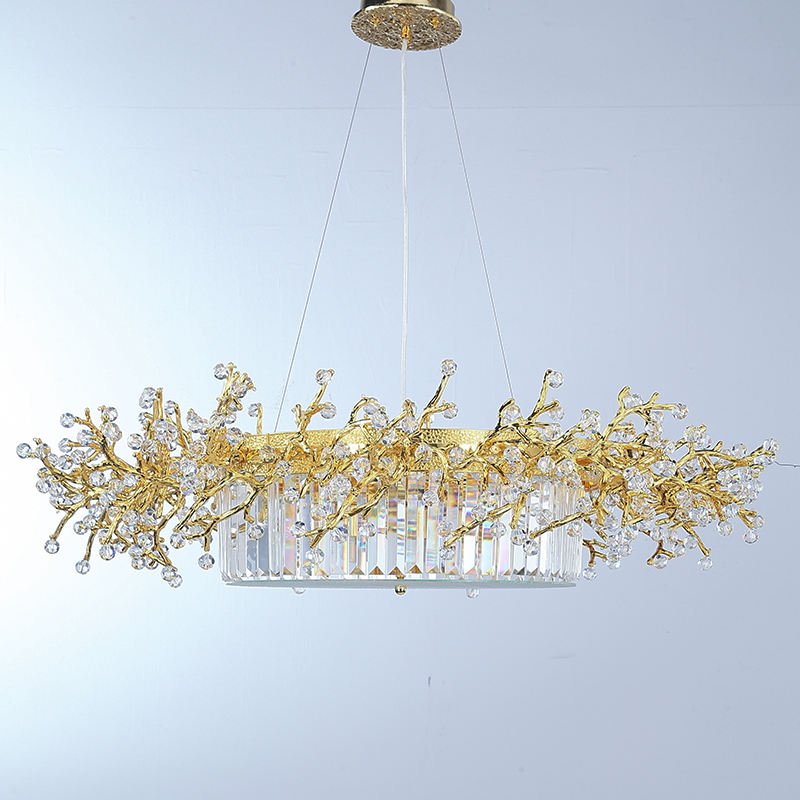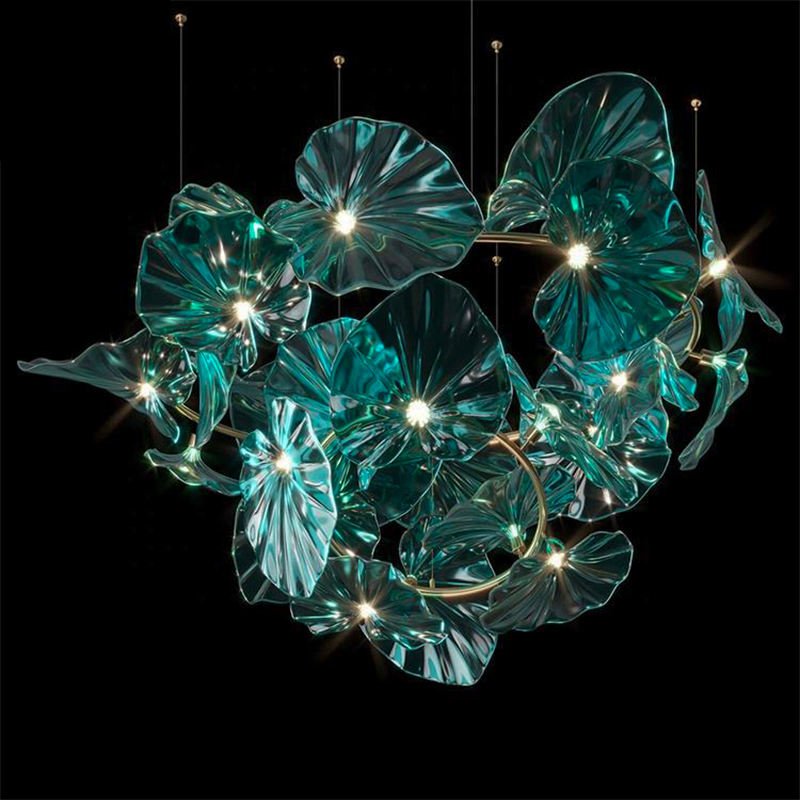Key Takeaways:
- • Nature Meets Modern: Modern branch chandeliers blend organic, tree-like forms with contemporary materials and finishes.
- • Versatile Style: They fit various spaces, from dining rooms and living areas to entryways and even bedrooms.
- • Statement Lighting: These fixtures often serve as a focal point, adding drama and elegance.
- • Material Variety: Common materials include metals (brass, nickel, black finishes), glass, and crystal elements.
- • DIY Potential: While complex, building your own is possible with the right tools and safety know-how.
- • Key Feature: Asymmetry and unique configurations are hallmarks of modern branch designs.
What Makes Modern Branch Chandeliers So Appealing?
So, why’s everyone talking about modern branch chandeliers lately? Well, its simple really. They got this look, kinda like bringing a bit of the outside indoors, but in a really sleek, modern way. Think tree branches, but made of cool metal or with sparkly bits. Its not like those old, fussy chandeliers your grandma might have had. These are fresh, interesting, and they make a big impact without being too loud about it, y’know? The appeal comes down to a few things. First off, their unique shape. No two are exactly alike, much like real branches. This organic feel mixes super well with clean lines and modern furniture. It adds warmth and texture to a room that might otherwise feel a bit cold or too perfect. Its that contrast, that’s what makes ’em interesting.
Unique Branch Chandelier Features: Lighting That Stands Out often include things like asymmetry – one side might be longer or have more ‘branches’ than the other. This feels more natural and less rigid than traditional symmetrical designs. Then there’s the way they play with light. The branches can cast really interesting shadows on the ceiling and walls, adding another layer of depth and ambiance to the space. I remember installing one in a client’s minimalist living room; the shadows it threw in the evening completely changed the feel, made it much cozier. We spent ages just watching the patterns shift. You don’t get that with a standard flush mount light, thats for sure.
They also work in loads of different styles. You might think ‘branch’ means rustic, but these modern versions fit right into super contemporary homes, mid-century modern spaces, even some industrial designs. It depends on the finish and the details. A matte black branch chandelier looks real sharp in an industrial loft, while a brass or gold one adds a bit of glam to a more luxe setting. They are surprisingly versatile little things. People are looking for lighting that does more than just illuminate; they want something that adds character, a piece of art almost. And these chandeliers deliver that. They start conversations. They draw the eye upwards. They just have presence. Its not just a light fixture; its a feature. Plus, the connection to nature is a big draw for many folks these days, trying to bring more natural elements inside. It feels calming, grounded, even when its made of polished chrome.
Exploring Different Styles: From Minimalist to Statement Pieces
When you start lookin’ at modern branch chandeliers, you quickly see there’s a huge range out there. It ain’t just one look. You got your really simple, minimalist ones – maybe just a few sleek metal rods arranged like branches, very understated but still elegant. Then you got your full-on statement pieces, big, sprawling designs with loads of arms, maybe dripping in crystals or with intricate leaf details. The style you pick really depends on your room and what kinda vibe you’re going for. Some people want something subtle that just blends in nicely, adds a touch of organic shape. Others want the chandelier to be the absolute star of the show, the first thing people notice when they walk in. And there’s a modern branch style for both ends of that spectrum, and everything in between.
For minimalist spaces, you might look at designs with very thin ‘branches’, perhaps in a single finish like matte black or brushed nickel. The bulbs might be exposed filament types for an industrial touch, or simple globes for a softer look. These simpler styles work great in smaller rooms or spaces where you already have a lot going on visually. They add that natural form without overwhelming the decor. You can explore various styles of branch chandeliers to see how designers play with simplicity. Sometimes less really is more, right? It’s about finding that balance.
On the other hand, if you’ve got high ceilings or a large, open-plan area, you can really go bold. Think large-scale chandeliers that spread wide, mimicking the canopy of a tree. These often incorporate mixed materials – maybe metal branches with glass shades shaped like leaves or flowers, or crystal accents that catch the light beautifully. These are the kinda chandeliers that define a room. They’re dramatic, luxurious, and unforgettable. Comparing modern vs. traditional designs, the modern ones often push the boundaries more, playing with asymmetry and unexpected materials. A client once chose a huge, sprawling bronze branch chandelier for their double-height entryway. It looked incredible, like a piece of sculpture hanging from the ceiling. It totally transformed the space from just a hallway into a grand entrance. It’s about scale and impact. Don’t be afraid to go big if the room can handle it. These statement pieces are designed to be noticed and admired.
Materials Matter: Metals, Glass, and Crystal in Modern Designs
The materials used in a modern branch chandelier make a huge difference to its final look and feel. Its not just the shape, its what its made of that counts too. Metal is probably the most common base material for the ‘branches’ themselves. You see loads of different finishes:
- Brass/Gold: Gives a warm, luxe, slightly vintage or mid-century vibe. Looks great against dark walls.
- Nickel/Chrome: Offers a cooler, sleeker, more contemporary look. Works well in minimalist or industrial spaces.
- Black (Matte or Glossy): Very modern, graphic, and versatile. Creates a strong silhouette.
- Bronze/Oil-Rubbed Bronze: Has a richer, sometimes more traditional or rustic feel, but can still look modern depending on the design.
The choice of metal finish really sets the tone. I often advise clients to think about the other hardware in their room – taps, handles, window frames – you dont have to match exactly, but it should feel harmonious, you know?
Then you got the decorative elements, often involving glass or crystal. This is where things get really interesting. Glass can be used for shades, maybe shaped like buds, leaves, or simple globes. It can be clear, frosted, smoked, or even colored, like the beautiful Aqua Glass Lily Pad Floating Chandelier. Coloured glass adds a whole different dimension, casting tinted light around the room. Frosted or opal glass gives a softer, more diffused light, while clear glass lets the bulb be seen (so choose your bulbs carefully!). Crystal is all about adding sparkle and glamour. Little crystal droplets, buds, or accents scattered along the branches catch the light and refract it, creating that dazzling effect. Think of the Gilded Branch Crystal Droplet Chandelier or the Luxe Gold Crystal Branch Chandelier – the crystal takes the branch concept somewhere really luxurious. Its a way to combine that organic form with pure elegance. Some designs, like the Gem Modern Branch Chandelier, really showcase how unique materials can elevate the branch concept. The interplay between the solid branches and the delicate, light-catching elements is often what makes these fixtures so special.
Where to Hang Your Modern Branch Chandelier: Perfect Placement
Okay, so you’ve found a modern branch chandelier you love. Now, where’s the best place to put it? Honestly, these things are pretty versatile, but some spots just work better than others. The most obvious place, and probably the most popular, is over a dining table. It becomes the centerpiece of the room, setting the mood for meals and gatherings. When hanging it here, the key is getting the height right. You want it low enough to feel connected to the table and create intimacy, but high enough so people sitting down dont bump their heads and can still see each other across the table. A general rule is the bottom of the chandelier should be about 30-36 inches above the tabletop. Also, think about the size – the chandelier shouldn’t be wider than the table itself, usually aim for it being about 1/2 to 3/4 the width of the table.
Living rooms are another fantastic spot. Here, it depends on your ceiling height and room layout. If you’ve got high ceilings, a larger, more dramatic branch chandelier can look amazing suspended in the center of the room or over the main seating area. It draws the eye up and fills that vertical space. If your ceilings are lower, you might opt for a wider, flatter design, or even position it slightly off-center over a specific zone, like a reading nook or conversation area. Make sure there’s enough clearance for people to walk underneath comfortably – usually at least 7 feet from the floor to the bottom of the fixture. Some great ideas for modern chandeliers for living room design often feature branch styles. You can check out the best uses for various types of branch chandeliers for more specific room ideas too.
Entryways and foyers are also prime locations, especially if you have a double-height space. A stunning branch chandelier makes a brilliant first impression as people enter your home. It sets the tone right away. Again, scale is important – match the size of the chandelier to the size of the foyer. A small foyer needs a smaller fixture, while a grand entrance can handle something much more substantial. I’ve even seen them used effectively in large master bedrooms, often centered over the bed or a seating area, adding a touch of romance and luxury. Just be mindful of the light output – you’ll probably want it on a dimmer switch for bedrooms, so you can adjust the mood. The key is always considering the scale of the fixture in relation to the room size and ceiling height, and thinking about the function of the space.
Thinking About DIY? What You Need to Know
Right, so maybe you’re looking at these gorgeous branch chandeliers and thinking, “Could I make one myself?” It’s definitely a tempting thought, especially if you’re handy and want something totally unique. Going the DIY route can be really rewarding, letting you customize the size, shape, and finish exactly how you want it. But, lets be honest, its not a project for a complete beginner, especially when electricity is involved. Safety first, always. Before you even think about starting, you absolutely need to understand the basics of electrical wiring or get help from someone who does. Working with electricity can be dangerous if you dont know what you’re doing. Make sure you read up on DIY Branch Chandeliers: Safety Tips for DIY Lighting. Things like turning off the power at the breaker box, using the correct wire gauges, and ensuring secure connections are non-negotiable.
Assuming you’ve got the safety aspect covered, what else do you need? Well, you’ll need the right tools needed for DIY projects. This could include wire strippers, wire cutters, pliers, screwdrivers, maybe a drill, and potentially soldering equipment depending on your design. Then there’s the materials for the branches – people use actual cleaned and treated branches sometimes, or metal tubing, pipes, even antlers for a more rustic look. You’ll also need lamp sockets, wiring, a ceiling canopy kit, and of course, light bulbs. Following a good DIY Branch Chandeliers: Step-by-Step Guide to Building Your Own is crucial. Don’t just wing it. These guides often break down the process into manageable stages, from assembling the structure to wiring the sockets in parallel.
One area where DIYers often run into trouble is the design and balance. It’s easy to make something that looks a bit messy or lopsided if you’re not careful. Planning the layout of the branches beforehand is key. Sketch it out, think about how it will hang, where the weight will be distributed. Underestimating the weight is another common mistake highlighted in guides about DIY Branch Chandeliers: Common Mistakes to Avoid. Make sure your ceiling box and mounting hardware can support the final weight of your creation! Another cool angle for DIY is upcycling. Maybe you have an old light fixture you could repurpose, or interesting materials you could incorporate. There are some neat DIY Branch Chandeliers: Creative Upcycling Ideas out there, like using old plumbing pipes or even bicycle parts to create the branch structure. It adds character and its sustainable. So yeah, DIY is possible, but go into it with your eyes open, prioritize safety, and plan carefully. The result could be amazing, a real one-off piece.
Modern vs. Classic Branch Styles: Finding Your Fit
Choosing between a modern branch chandelier and a more classic style really comes down to your personal taste and the overall decor of your home. There’s overlap, for sure, but they definitely have different vibes. Understanding the key differences can help you decide which direction is right for you. Classic branch chandeliers often draw more literally from nature. They might feature more detailed leaves, flowers, or even little birds incorporated into the design. The finishes tend towards traditional ones like aged brass, bronze, or sometimes wrought iron. They evoke a sense of history, elegance, maybe even a bit of fairytale romance. You can explore some of these looks in resources discussing Classic Branch Chandelier Styles: Nature-Inspired Elegance for Your Home. These styles often work beautifully in traditional homes, country houses, or spaces with antique furniture. They bring warmth and a connection to nature in a very established, recognisable way.
Modern branch chandeliers, on the other hand, interpret the ‘branch’ idea more abstractly. The lines are often cleaner, simpler, more geometric even when they’re asymmetrical. As we discussed, they play with materials like polished chrome, matte black, clear glass, and crystal in ways that feel very contemporary. The focus might be less on replicating nature exactly, and more on capturing its essence – the organic form, the sprawling structure – but through a modern lens. Think sleek metal arms, perhaps ending in simple exposed bulbs or minimalist shades. Check out comparisons like Modern vs. Traditional Designs: Branch Chandeliers for Every Style to see these differences side-by-side. Modern styles are obviously a great fit for contemporary, minimalist, mid-century modern, and even some industrial interiors. They feel fresh, sculptural, and often quite bold.
So, how do you choose? Look at your existing furniture and architecture. Does your home have clean lines, neutral colors, and a minimalist feel? A modern branch chandelier will likely fit right in. Does it have more traditional moldings, perhaps wallpaper, warmer wood tones, and classic furniture shapes? A classic branch style might be more harmonious. But don’t be afraid to mix it up a little! Sometimes placing a very modern branch chandelier in a slightly more traditional room can create a really exciting contrast, making the fixture stand out even more. I had a client with a lovely, quite traditional Victorian terrace house. We put a surprisingly sleek, black modern branch chandelier in her dining room, and it just *worked*. It updated the space without fighting the original character. Ultimately, choose the style that speaks to you, the one you’ll love looking at every day. Its your home, after all.
Integrating Modern Branch Chandeliers with Your Decor
Putting a modern branch chandelier in your room is one thing; making it look like it *belongs* there is another. Integration is key. You want it to complement your existing decor, not clash with it or look like an afterthought. A few simple considerations can help you get it right. First, think about scale and proportion again. We talked about it for placement, but it matters for integration too. A chandelier that’s too big for the room will dominate everything and make the space feel smaller. One that’s too small will get lost and look kinda puny. Measure your room (length, width, ceiling height) and use general guidelines – like adding the length and width of the room in feet to get a rough diameter for the chandelier in inches – as a starting point. But also trust your eye. Does it feel right?
Next up is finish and color. Try to echo the finish of the chandelier somewhere else in the room, even in a small way. If you choose a brass chandelier, maybe have brass picture frames, drawer pulls, or a brass detail on a lamp base. It doesn’t have to be overkill, just a little visual link. If your chandelier has black elements, maybe echo that in chair legs, window frames, or artwork. This helps tie the fixture into the overall scheme. Same goes for color if your chandelier incorporates colored glass or other elements. Pick up that color in cushions, rugs, or accessories. General resources on Lighting Design often cover how finishes impact a space. Think about the overall style too. While modern branch chandeliers are versatile, a super ornate, crystal-dripping one might look a bit odd in a very rustic, log-cabin style room. Likewise, a very minimalist, industrial-looking branch chandelier might not be the best fit for a very formal, traditional space (unless you’re deliberately going for high contrast). Consider the lines of your furniture – are they curved or straight? Does the chandelier echo or contrast with those lines in a pleasing way?
Finally, think about the light itself. What kind of mood are you trying to create? Do you need bright, functional light, or softer, ambient light? Most modern branch chandeliers work best for ambient or feature lighting rather than task lighting. Always, always install a dimmer switch. It gives you so much control over the atmosphere. You can have it bright when you need it, and soft and moody when you want to relax. Also consider the type of bulbs – warm white (around 2700K-3000K) is usually best for living spaces as it feels cozier than cool white. If the bulbs are exposed, choose ones that look good, like vintage filament bulbs or decorative globe bulbs. Getting these details right helps the chandelier feel like an integral part of your home’s design, not just something hanging from the ceiling.
Future Trends: What’s Next for Branch Chandeliers?
It’s always fun to think about what’s coming next in design, and lighting is no exception. Modern branch chandeliers have been popular for a while now, but the style is definitely still evolving. Looking ahead, based on broader Lighting Trends 2025 and what we’re seeing from designers, a few directions seem likely for these nature-inspired fixtures. One big trend is the continued integration of technology. We’re already seeing smart bulbs becoming commonplace, allowing control over brightness and color temperature via apps or voice commands. Expect to see more chandeliers designed with this capability built-in, perhaps even with more sophisticated controls like tunable white lighting that can mimic natural daylight patterns throughout the day. Imagine a branch chandelier subtly shifting its light color from cool white in the morning to warm white in the evening – that’s likely where things are headed.
Sustainability is another major driver. Expect to see more branch chandeliers made from recycled or sustainable materials. This could mean reclaimed metals, recycled glass, or even innovative bio-materials used for decorative elements. Designers are getting really creative with eco-conscious design, so we might see branch forms emerging from unexpected, earth-friendly materials. LED technology is already dominant due to its energy efficiency, but we’ll likely see further advancements, perhaps even more integrated, less visible LED light sources, making the chandelier structure itself appear to glow. The focus will be on longevity and reducing environmental impact, without sacrificing style.
In terms of aesthetics, we might see a move towards even more organic and irregular forms, really pushing the ‘natural imperfection’ angle. Perhaps more textured finishes that mimic bark or stone, moving away from perfectly smooth metals. There could also be a trend towards mixing materials in more unexpected ways – think wood and polished chrome, or concrete and delicate glass. Color might play a bigger role too, moving beyond metallic finishes to include powder-coated colors or vibrant glass elements, reflecting a broader trend towards more colorful interiors. Designs like Modern Branch Lighting showcase this ongoing evolution. We might also see more modular or customizable branch systems, allowing homeowners to configure their chandelier to perfectly suit their space. The core appeal – that blend of nature and modernity – will likely remain, but the specific interpretations will keep changing, keeping the style fresh and exciting for years to come. Its a style with legs, or branches, should I say!
Frequently Asked Questions (FAQs)
Q1: What size modern branch chandelier do I need for my room?
A: It depends on the room size and ceiling height. A common guideline is to add the room’s length and width in feet, and use that number as the diameter in inches (e.g., a 12ft x 14ft room suggests a 26-inch diameter chandelier). For height, ensure at least 7 feet of clearance below in walkways, and hang it 30-36 inches above a dining table. Always consider the visual weight too – a delicate design can be larger than a bulky one.
Q2: Are modern branch chandeliers difficult to install?
A: Installation can be more complex than a standard pendant, especially for larger or heavier designs, due to their shape and multiple arms/wiring points. If you’re not experienced with electrical work, its highly recommended to hire a qualified electrician. Ensure your ceiling junction box is rated to support the chandelier’s weight. Some heavier fixtures might need additional bracing. Following DIY safety tips is crucial if attempting it yourself.
Q3: What kind of light bulbs work best in modern branch chandeliers?
A: LEDs are the standard choice due to energy efficiency and long lifespan. The style of bulb depends on the fixture. If bulbs are exposed, choose decorative ones like filament, globe, or Edison bulbs. If shaded, standard LED bulbs are fine. Pay attention to color temperature – warm white (2700K-3000K) is usually preferred for ambiance in living areas. Always check the maximum wattage recommended for the fixture sockets.
Q4: How do I clean a modern branch chandelier?
A: Cleaning can be a bit fiddly due to the multiple arms and potential decorative elements. Turn off the power first! Use a microfiber duster or a soft cloth for regular dusting. For deeper cleaning, slightly dampen a cloth with water or a mild glass cleaner (avoid spraying directly onto the fixture). Be gentle, especially around delicate glass or crystal parts. For intricate designs, a soft paintbrush can help get into crevices.
Q5: Are modern branch chandeliers expensive?
A: Prices vary hugely, just like any lighting. You can find simpler, smaller modern branch styles at quite affordable prices from mass retailers. However, designer pieces, larger fixtures, or those made with high-end materials like solid brass or crystal can be significantly more expensive, running into thousands of pounds/dollars. There are options across different budget levels, and exploring various styles can give you an idea of the range.


